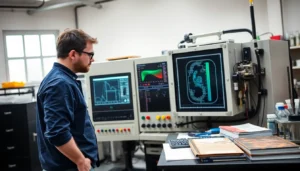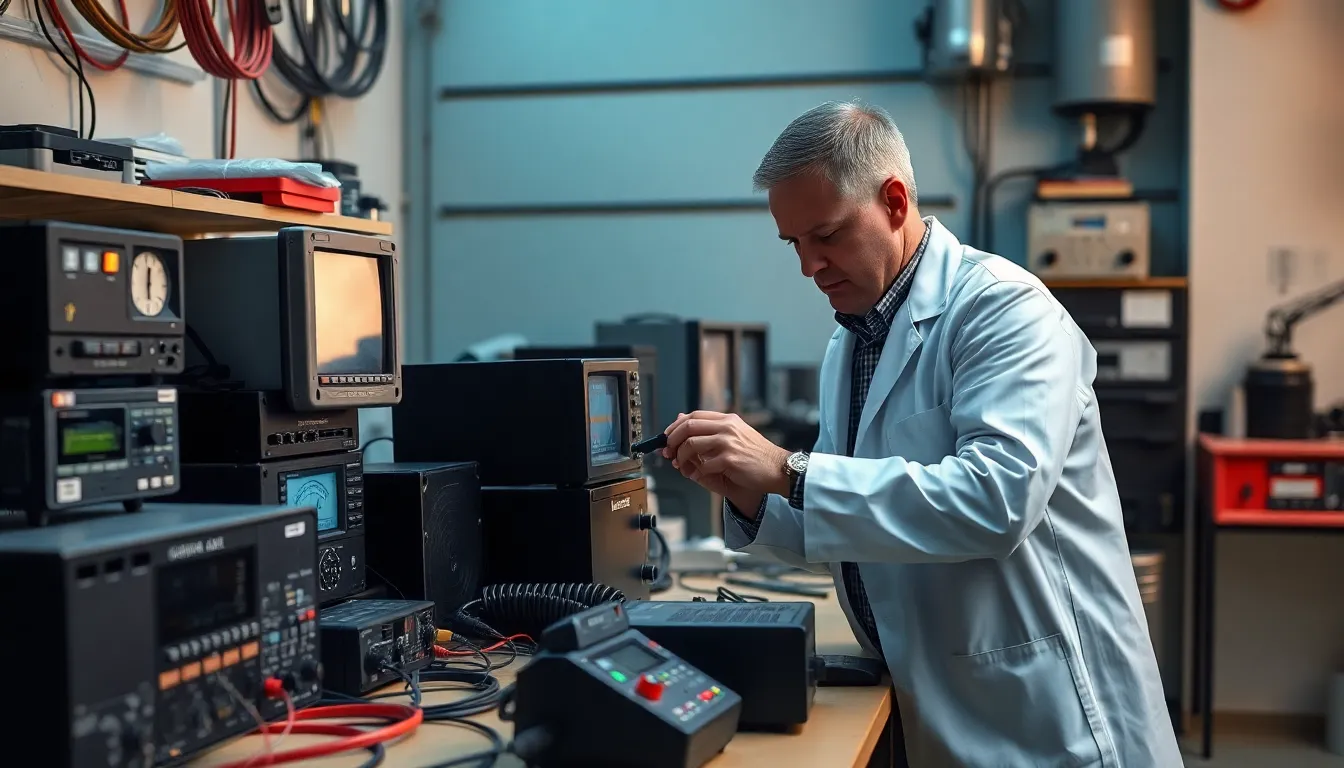
Vibration isn’t just for rock concerts and dance floors; it’s a fascinating concept that permeates our everyday lives. From the gentle hum of a washing machine to the powerful rumble of a thunderstorm, vibrations shape our world in ways most people overlook. If you think vibrations are just for musicians and engineers, think again! There’s a treasure trove of books that explore this captivating topic, offering insights that’ll make readers shake their heads in disbelief—pun intended.
Diving into the world of vibration literature can be a game changer. Whether one’s a curious novice or a seasoned expert, these books promise to resonate with anyone eager to understand the science behind the buzz. So grab a cup of coffee, settle in, and prepare to be enlightened by the rhythmic wonders of vibration. Who knew learning could be this much fun?
Books On Vibration
Vibration refers to the oscillating motion of an object in a specific direction. This motion occurs around an equilibrium point, which represents where the forces acting on the object are balanced. Several factors influence vibrations, including mass, stiffness, and damping characteristics of materials.
Vibrations exist in numerous forms, including mechanical vibrations, acoustic vibrations, and electromagnetic vibrations. Mechanical vibrations manifest in structures and machines, affecting performance and lifespan. Acoustic vibrations, on the other hand, involve sound waves traveling through various mediums. Electromagnetic vibrations encompass phenomena like radio waves.
Measurement of vibrations typically employs accelerometers and vibration sensors. These devices provide quantitative data that can help in analyzing the behaviors of systems. Moreover, understanding these behaviors allows for better design and troubleshooting strategies in engineering and technology applications.
Vibrational frequency plays a crucial role in determining how energy propagates through different media. Different frequencies exhibit unique effects on materials and human perception. For instance, certain frequencies can resonate with structural components, causing amplified vibrations that may lead to failure.
Applications of vibration knowledge span numerous fields. Engineers utilize vibration analysis to predict equipment failures and enhance products. In medical diagnostics, vibrations help in imaging techniques, such as ultrasound. Additionally, musicians explore vibrational principles to achieve desired sound qualities in their instruments.
Further exploration of vibration concepts reveals advanced topics, such as harmonic analysis and modal testing. These areas delve into the relationships between different vibrational modes and their influence on overall system dynamics. Understanding these complex interactions enhances the capability to harness vibrations effectively in various disciplines.
Books About Raising Your Vibration

Numerous insightful books cover the topic of vibration, catering to both academic and practical interests.
Academic Texts
Key academic texts provide in-depth understanding of vibration theory. “Theory of Vibrations with Applications” by William T. Thomson and Marie Dillon provides foundational principles, discussing dynamics and stability in various systems. “Mechanical Vibrations” by S. S. Rao focuses on mathematical modeling and real-world problem applications. These texts serve as essential references for students and professionals alike, offering comprehensive insights into vibration analysis, measurement, and control techniques.
Practical Guides
Practical guides bridge theoretical concepts with real-world applications. “Vibration Analysis for Electronic Equipment” by David M. H. Hsieh addresses techniques for ensuring reliability in electronic devices. “Shock and Vibration Handbook” by Cyril M. Harris provides detailed methodologies for vibration testing and control across industries. These guides empower engineers and technicians to apply vibration knowledge effectively, enhancing both performance and safety in various domains.
Books On Raising Your Vibration
Vibration literature explores essential themes relevant to both theoretical understanding and practical application. This body of work emphasizes various scientific principles and real-world uses that contribute to advancements across multiple fields.
Theories and Principles
Fundamental theories in vibration literature include harmonic analysis and modal testing. Harmonic analysis investigates how systems respond to oscillations at different frequencies. Modal testing identifies resonant frequencies, which is crucial for ensuring structural integrity. Influences from mass, stiffness, and damping characteristics shape these theories, establishing a solid foundation for understanding vibrations. Authors like William T. Thomson and S. S. Rao elucidate these concepts effectively, helping readers grasp the mathematical modeling involved.
Applications in Engineering
Vibrations play a significant role in engineering applications. Engineers utilize vibration analysis to enhance equipment performance and safety. This application spans across industries, including aerospace, automotive, and civil engineering. For instance, medical devices rely on precise vibration measurement for diagnostics. Furthermore, vibration analysis aids in troubleshooting potential failures by detecting anomalies. Books like “Vibration Analysis for Electronic Equipment” provide valuable insights into practical applications, bridging theoretical knowledge and industry needs.
Recommendations for Further Reading
To deepen understanding of vibrations, several books provide valuable insights into the subject. “Theory of Vibrations with Applications” by William T. Thomson and Marie Dillon serves as a comprehensive resource for foundational principles and mathematical modeling.
“Mechanical Vibrations” by S. S. Rao offers detailed analysis techniques and design considerations relevant to both engineering students and professionals. For those seeking practical applications, “Vibration Analysis for Electronic Equipment” by David M. H. Hsieh bridges theoretical concepts with industry practices, focusing on electronic machinery.
Cyril M. Harris’s “Shock and Vibration Handbook” stands out as a key reference, presenting a wide range of topics related to vibrational phenomena. Each of these texts equips readers with the knowledge to tackle various vibration-related challenges.
“Fundamentals of Vibration” by Leonard Meirovitch delivers clear explanations of complex concepts, making it accessible for beginners while remaining valuable for experts.
Exploring “Vibrations and Waves” by A.P. French allows readers to grasp the relationship between vibrations and their applications in physics. For readers interested in the connection of vibrations to modern technology, “Vibration Control of Active Structures” by A. Preumont discusses advanced methods and innovations in vibration control systems.
“The Art of Vibration Testing” by John P. McNulty emphasizes testing methodologies vital for engineers. Engaging with these texts fosters a deeper appreciation of the vibrational science that permeates various fields, from engineering to medicine.
Conclusion
Exploring the world of vibrations opens up a realm of knowledge that impacts numerous fields. The recommended books serve as essential resources for anyone eager to deepen their understanding. Whether one’s interest lies in engineering, medicine, or even music, these texts provide insights that bridge theory with practical application.
By engaging with this literature, readers can enhance their grasp of vibrational principles and their significance in everyday life. The study of vibrations not only enriches academic pursuits but also empowers professionals to innovate and improve systems across various industries. Embracing this fascinating subject can lead to new discoveries and advancements that resonate well beyond the pages of these books.
